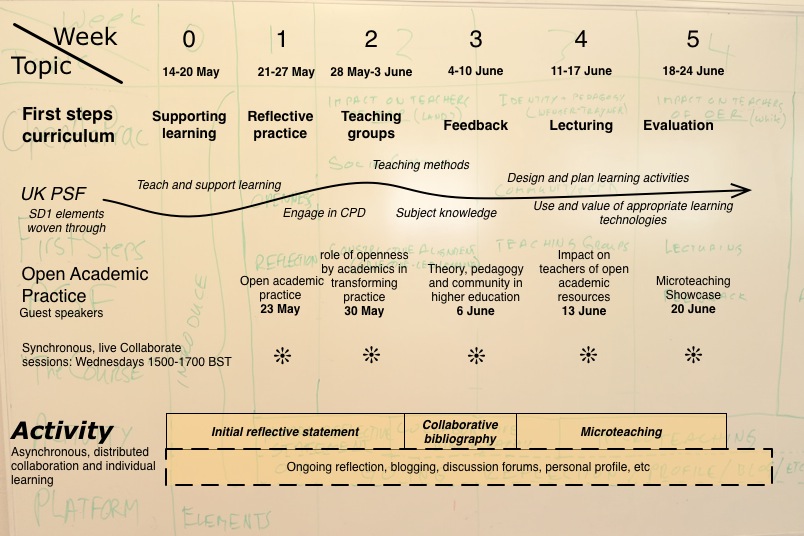 Now that we are in our first week for of the First Steps into Learning and Teaching in Higher Education mooc (massive open online course), we find ourselves focused on the topic of reflective practice.
Now that we are in our first week for of the First Steps into Learning and Teaching in Higher Education mooc (massive open online course), we find ourselves focused on the topic of reflective practice.
Needless to say I have been reflecting on what to write here all week. Here it is Friday, and still thinking. Perhaps still reflecting is a more apt descriptor.
I think that is one of the things I am beginning to learn (or at least articulate) — we can do lots of reflecting, though without somehow making it present and sharing it, there may not be much benefit for the larger community.
While this mooc is focused around “new lecturers, people entering higher education teaching from other sectors and postgraduate students who teach,” I initially thought it may not be the best fit for me, in that I have taught online, I teach courses on how to teach online, and I study and learn and virtually live online (pun intended), but the power of a mooc to think and reflect and informally interact (potentially) with other really interesting people has really captured my thinking, and while my own blended course that I am teaching is beginning at Pace University (where I am teaching the course NURS 840: Teaching and Learning in Advanced Practice Nursing), there is always a benefit in considering one’s own teaching and learning practices. Even if I learn a few things along the way that helps my own teaching (and in the process my own learning), then kudos to us all.
I believe taking the opportunity for my own considering my work and direction, especially as I am beginning to teach my own new university course, may hopefully benefit my own students (all adult learners who have a lot of professional education and significant responsibility in their own roles). With this said, I really like the assignment that the mooc organizers have invited us to engage in (with the beginning of the Reflective Writing verbiage here):
Your reflections are your own and personal to you. Your reflective writing should therefore focus on whatever is most useful to you at this time. However, a successful MOOC relies on open sharing of ideas and resources, so we hope you will share your reflections.
If you are unsure about what to focus on, then you might try the following suggestions. If you have chosen to be assessed, please follow the guidelines below.
We suggest that in this first week you reflect on your overall experience to date as a teacher; what kinds of students have you taught, what have you discovered from the experience, and what have you most enjoyed in your teaching?
With this in mind, I am increasingly very aware that my biggest challenge with sharing this reflecting is just starting the writing process. I find the same challenge as I work on my doctoral thesis — I have all of it floating around in my mind, with my biggest challenge to sit and begin to write about it.
Phew, with this start now out of the way, I find I am already (and quite naturally, I might add) considering the suggested elements of the The UK Professional Standards Framework for teaching and supporting learning in Higher Education 2011 in this light, and expect to continue this thinking in another post tomorrow.
Until then, good reflective practice to you.

